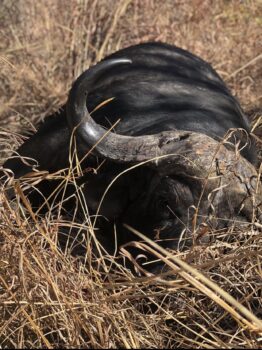
For Whom The Bell Tolls: A Buffalo on Hemingway’s Birthday
By Michael Maynor
It’s one thing to be sitting in the comfort of your home, in a comfortable chair, with a glass of bourbon, reading Peter Capstick’s Death In the Long Grass and dreaming of hunting Cape Buffalo in the grass so tall and thick that you can barely see a foot in front of you. It is another thing to leave the safety of your home, travel thousands of miles, and put boots on the ground in Africa. But in the Summer of 2018, that is where I found myself when I went to Zambia’s Luangwa Valley to realize a dream.
I don’t know when the desire first came to me to hunt Cape Buffalo, but I remember one Christmas getting a copy of Peter Capsticks Hunting the Cape Buffalo on VHS. That video lit the fire and desire to one day travel to Africa. It would be several years before I became serious about Africa, but once the fire was lit, I knew I had to pursue the black Buffalo of Africa one day.
Charles Reedy and I became friends through the website Africahunting.com. I had read a few of his posts about his hunting trips in Africa, and once I found out he was a fellow Tar Heel, I sent him a message. We chatted back and forth and then arranged a phone call. I informed him that I had the desire to hunt Africa but wanted to do it right. I had talked to different outfitters in the past and knew several folks that had been, but I was still debating on if I wanted to include a buffalo on my first trip over or make it a plains game hunt. I talked to Charles, and we agreed that if I was only ever going to go once, I should do Buffalo on my first trip.

He asked me where I would like to try and hunt my Buffalo, and my first option was Zambia’s Luangwa Valley. I had become a fan of Capstick’s Death in the Long Grass and wanted to experience what he had written about. Charles is a master at arranging trips, and I’ll never forget the day he told me we were going to the valley. The trip was booked: it would be a combo Dangerous and Plains game hunt, with Buffalo at the top of my list!
Our first day hunting we had a close encounter with a Hippo, and on the second day I took the number two animal on my list a beautiful old Kudu bull.We arose much earlier on the third day of our Safari in the beautiful Luangwa Valley. We would be heading out to the plains after Buffalo and needed to arrive by daybreak. We had agreed the night before to be up at 4:00am, have a quick breakfast, and be out of camp no later than 4:45am. Now in the predawn hours I was sitting in the truck and my thoughts went back to the night before.
I thought back to the previous evening when Strang mentioned we would be hunting buffalo in the morning. I thought of the books I had read and the videos I had watched. I was well aware of the reputation that buffalo have, and I knew Cape Buffalo killed more hunters yearly than any other African animal.
I was aware that a professional hunter had been killed by a buffalo in May, and this was now July. Still, I had come to Africa to hunt a wild buffalo and to hunt him on his terms. As author Craig Boddington wrote in his book Buffalo!, “Not all Buffalo charge, but not all charges can be stopped.” If the worst happened, I would have to deal with it then, and I brushed the negative out of my mind.
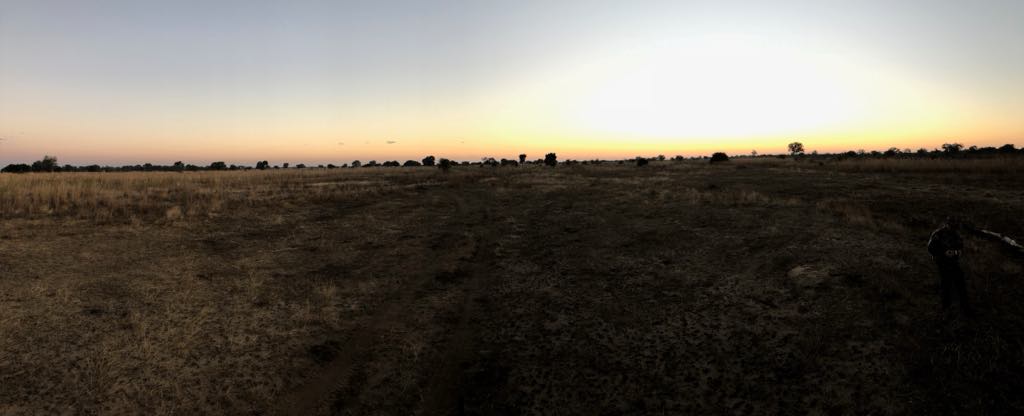
We drove past a herd of Cookson Wildebeest that stood illuminated by the rising sun. The plains were beautiful as we crossed them. We spotted a lone bull elephant slowly wandering, and for a moment in my mind, I was transported back to Old Africa and away from the modern world. I thought of the hunters that came before me, the ones from the old books I poured over for so long, and now I was writing my own African adventure story.
We parked the truck, and the trackers and game scout got and started looking for tracks. A few lion tracks were spotted; they weren’t very old. On our way in that morning, we saw a few sun-bleached bones that reminded us we might not be the only hunters looking for buffalo that morning. Strang had walked back over to the truck where Charles and I were sitting and watching the trackers through binoculars. Strang informed us we would be following them in the truck.
Fresh trackers were soon found so we dismounted, and I grabbed my rifle, a CZ550 Safari chambered in .375 H&H, affectionately named “Margot.” I named the rifle partly after a character in one of my favorite Hemingway short stories,”The Short Happy Life of Francis Macomber.” We started walking through the thick scrub. It reminded me of the scrub oaks back home in North Carolina, and I half expected to flush a covey of quail. The reality was we might flush something much bigger and more dangerous.
As we walked on, I could see the dust rising from the herd, and we moved quickly to try and catch up with them. Strang was in the lead with his big double rifle resting on his shoulder. He stopped me for a moment because my boots didn’t have smooth souls, causing a lot of noise on the dried leaves. He demonstrated a better way to step, which helped lower the volume, and we continued. Coming through the trees, we finally found the herd on the edge of the long grass. We circled around. Strang attempted to get us into position, but they bolted before that happened.
A few dark bodies moved into that nightmare-inducing grass. We Moved and followed the herd into the grass. It was as hellish as Capstick wrote and more. It’s tall, around 10-15 feet, and you can’t see anything except what is directly in front of you, moving through the long.
Moving through the long grass, we heard a sound, the grass moved, and Strang and I shouldered our rifles. For a moment, all went quiet, but nothing happened. We came out of it on the other side, and Strang saw the buffalo and set up the sticks. we could see a bull that was looking at us, but before I could squeeze off a round; they bolted and were gone. We went around the edge of the grass, backtracking to where we came from, and regrouped. The wind was a significant factor, and we were fighting the wind most of the hunt.
We rejoined Charles and the rest of the group and learned they had a near close encounter when the herd split. Thankfully nothing happened, and we moved to a different location to take a break and gather our thoughts. After a rest, we resumed tracking the herd, and before long, we had caught back up to their tracks. We moved through an area of tall trees and grasses. Luckily, this grass was not so tall that I couldn’t see through it! At this point, it was just myself, Strang and a tracker stayed back. Strang sat down on the ground, and it was time to start crawling on our hands and knees, so I knew we were getting closer.
We had to clear gaps and be as cautious as possible because there were many cows at the rear, and if they spooked, it would be done. We moved, and they moved, and we kept checking the wind. We changed positions from crawling to sitting with rifles across our laps and inching along on our posteriors. I had read a copy of Africa’s Most Dangerous by Kevin Robertson before coming on this hunt, and I remembered him discussing and demonstrating this same movement. I wondered if I would do that on my hunt, and now I find myself moving through the scrub similarly in Zambia to take a buffalo.
We reached a point where we could stand and get on the sticks. I saw a mass of bodies, cows, and calves, then I saw a bull raise his head and look at us. I wish I could tell you I saw the famous “Looks at you like you owe him money” look that Ruark wrote about, but when the bull raised his head, and I saw the shape of his horns, all I thought was that’s what I want and almost yelling to Strang, “Strang that’s it! I want that one!” I had in my mind the shape I was looking for in my first buffalo, and that bull fit the bill! Strang calmed me down, and we waited for the bull to get into position. I was trying to distinguish him from the other black bodies, and finally, he moved into position quartering to us. Strang said, “You see that blade of grass that’s bent over in front of him? Aim for that.” I saw it, and I aimed directly for it. All was quiet, and I steadied the crosshairs and squeezed the trigger. The gun recoiled, and then bodies scattered. We picked the sticks up and moved forward, paused, and then I heard the famous death bellow.
We cut a wide path and made it to the Buffalo. He’s lying down, and we watch for any movement or signs of life because, well, it’s the dead ones that kill you. Objects were thrown in his direction, and no life was found. The 300 Grain Swift A-Frame had done its job well. We moved in when it was deemed safe, and handshakes and congratulations went all around.
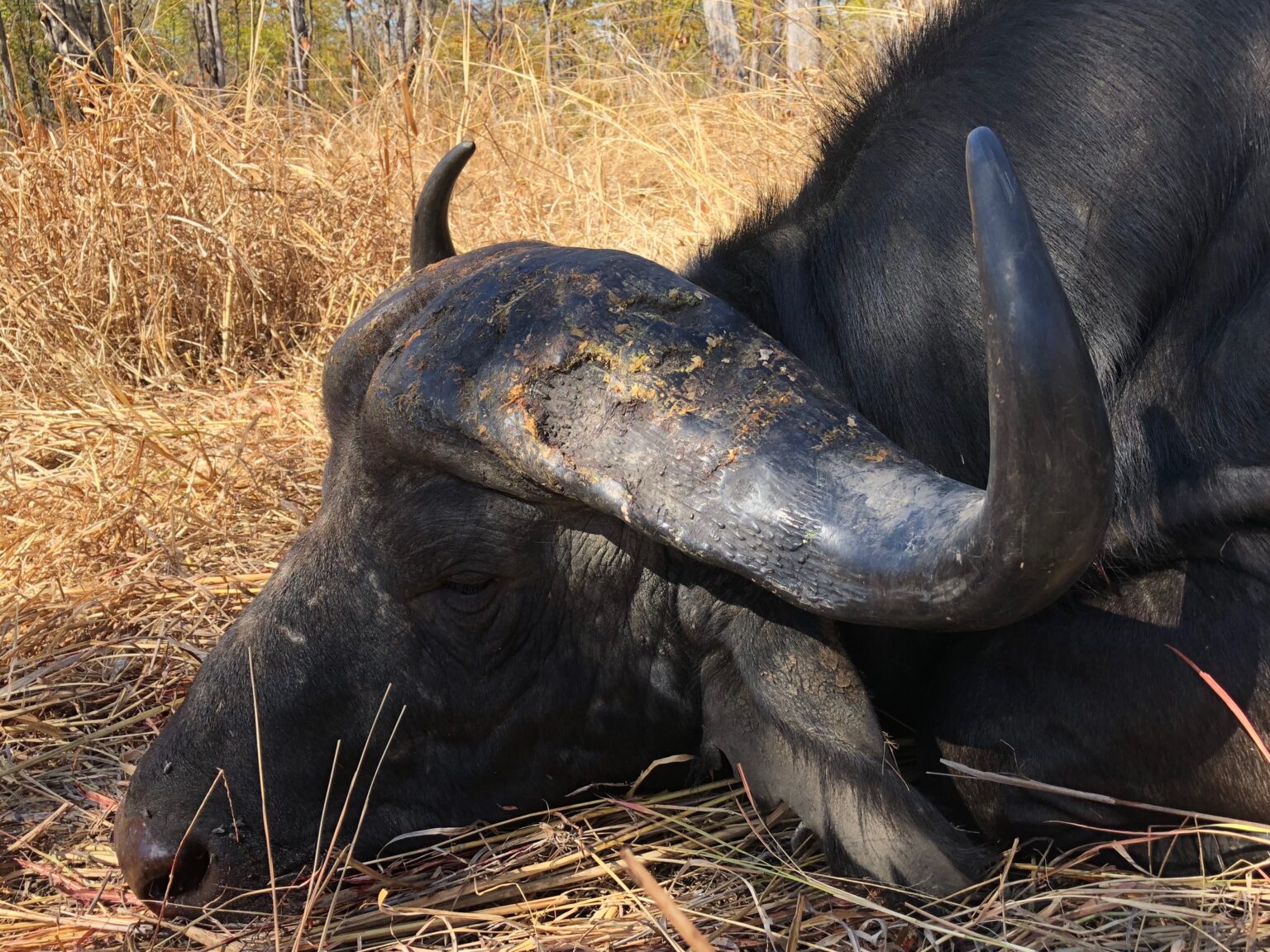
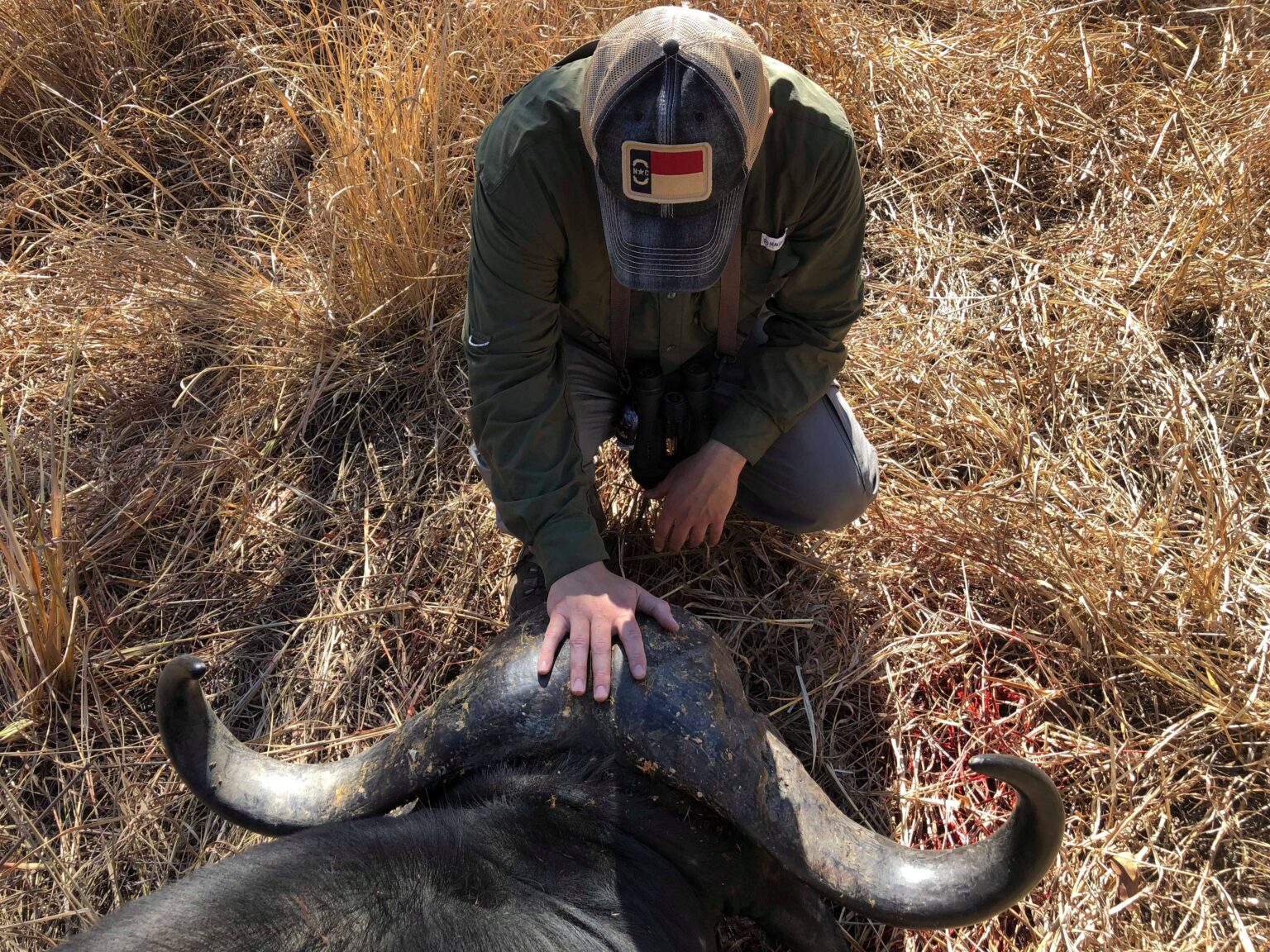
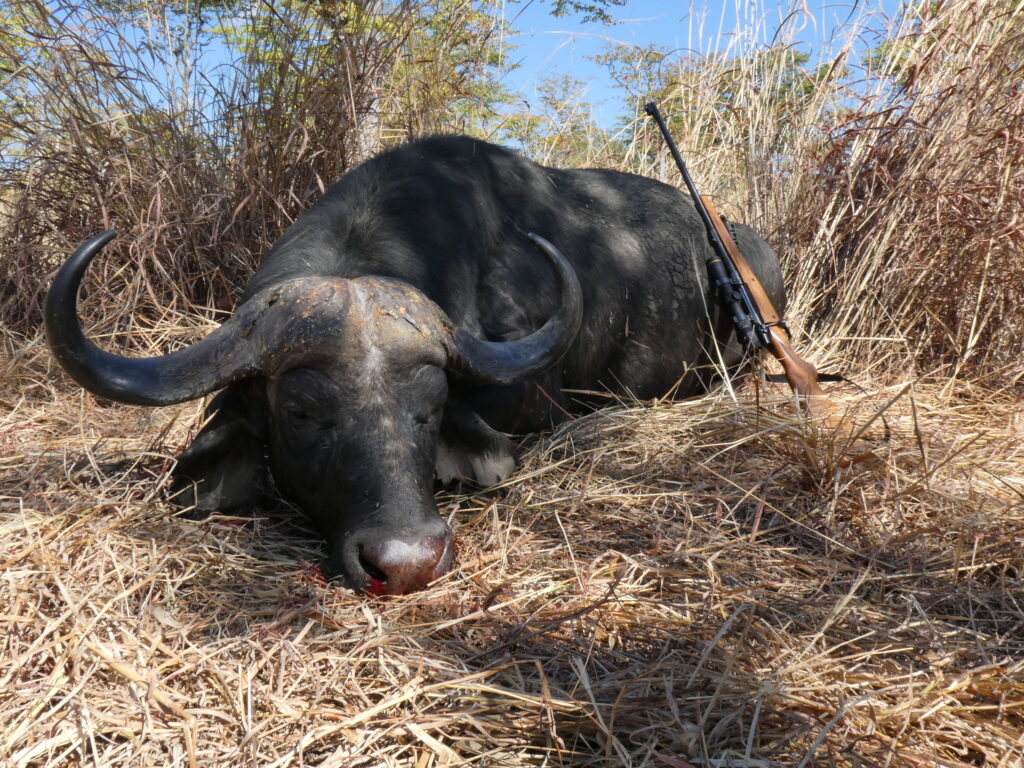
Like my kudu the day before, this bull was full of character. He had big hunks missing from both horns, a body covered in marks and scars from fighting, and ears ripped from thorns. I knelt down and wondered what all he had seen, how many lions and poachers he had fought off. We took plenty of pictures, and the trackers returned to get the truck. Strang and Charles sat in the cool shade of a tree while I spent time snapping photos and enjoying the moment. I couldn’t be happier with my first Buffalo or how the hunt played out, and I know I was lucky as I have read enough to know not all buffalo hunts go this smoothly, and bulls are rarely taken with one shot. I thanked God.

The truck returned, and we took a couple of group pictures. After Strang ensured I had all the shots I wanted, they began the field dressing process. Charles and I grabbed a Mosi from the cool box and watched the scene. It would later take all of us to load the bull into the truck’s bed. Charles told me that stalk had everything you could want in a buffalo hunt, from being in the long grass to crawling, and it ended with a good first bull.
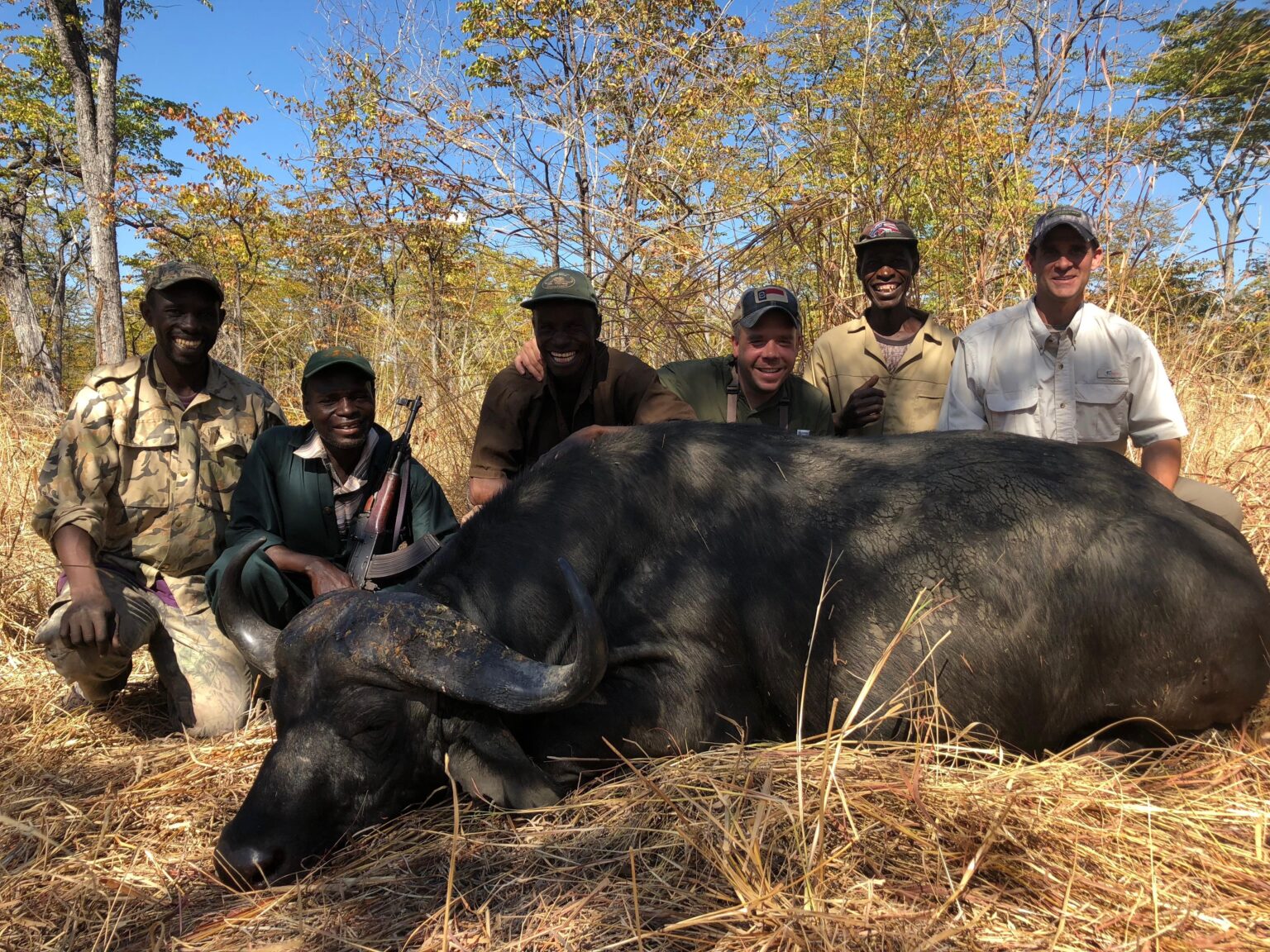
As we laughed and discussed the day, Charles remarked that he didn’t even know the date of today, and I agreed that I had lost track of time as well. We had become lost in Safari, and I would not realize until later that night as I was lying in my bed that the date was July 21st, Ernest Hemingway’s 119th birthday! Hemingway first stoked the coals of Safari for me so many years earlier that it seemed fitting that I hunted a buffalo on his birthday. I was a little bummed that I didn’t realize it sooner, so I could have toasted him in the field. It was not until I returned home to North Carolina and read a magazine article by Ruark that began,
“When you are out in the bush for any considerable length of time, you do not remember days by a week or by weather.You refer back to the day of the lion, the day of the Buffalo, or the day the jeep busted her ankle.”
-Robert Ruark
I realized that the magic of Safari is forgetting for a moment, the days, weeks, and the demands of home and work and just getting caught up in the moment. I’m sure Hemingway would rather someone get caught up in the moment of a buffalo than concern themselves with a date. With that being said, Cheers, Papa! Thanks for lighting the spark that sent me to Africa.
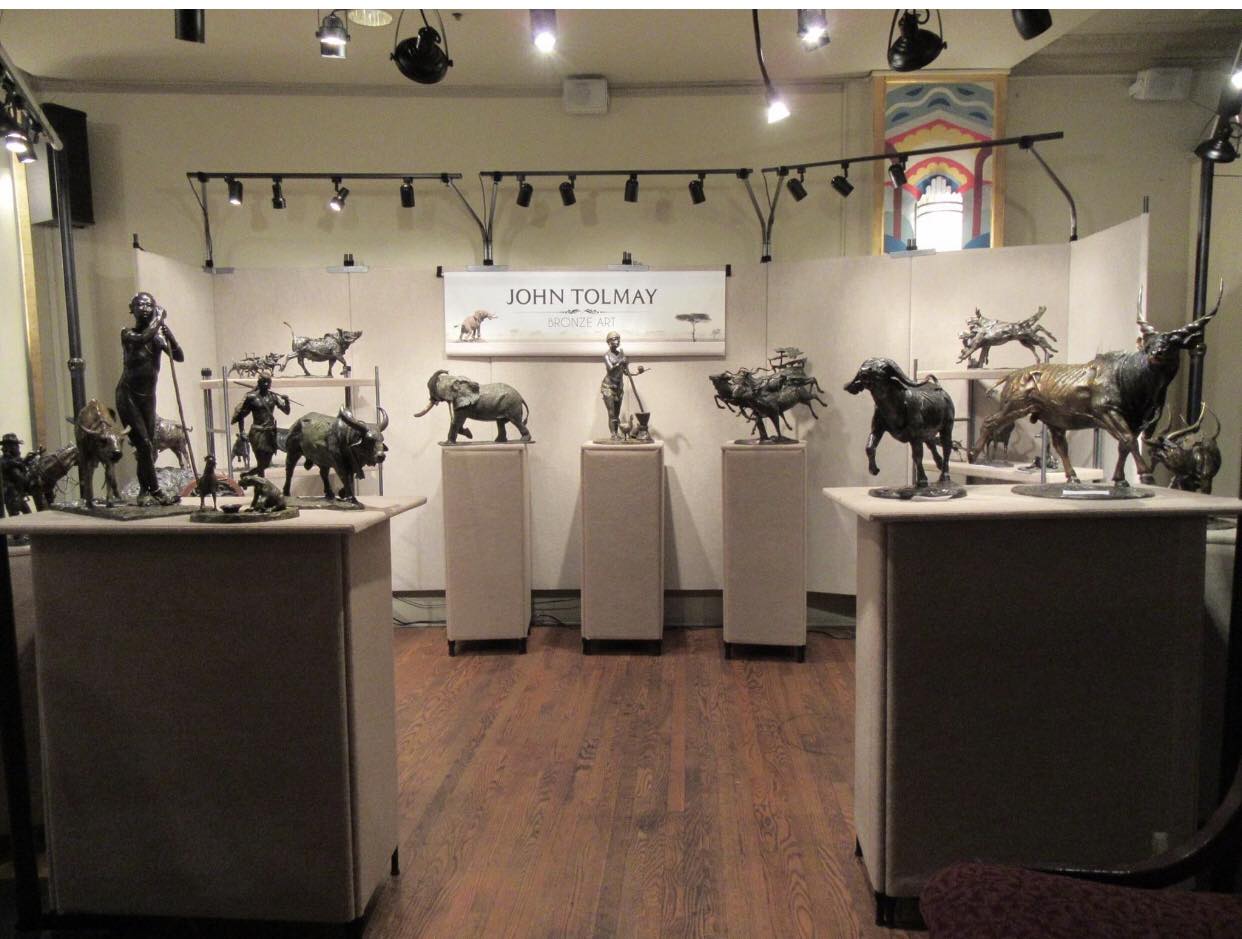
In February 2022, I visited the SEWE artist group. I found a captivating bronze statue of a Cape Buffalo Bull titled “For Whom the Bell Tolls” a My business partner, Robbie, urged me to purchase it as a nod to my first buffalo hunt on Hemingway’s birthday. I got the sculptor John Tolmay’s card and couldn’t stop thinking about the statue. A few days later, I contacted Mr. Tolmay and learned that only a few editions remained, so I quickly chose number 13. The sculpture portrays the buffalo in a pre-charging pose and serves as a reminder to always be alert. Whenever I gaze at the statue, memories of my time in Luangwa Valley come flooding back. For those interested in adding an African-inspired bronze to their collection, I highly recommend checking out Mr. Tolmay’s site. John Tolmay’s Bronze Africa.
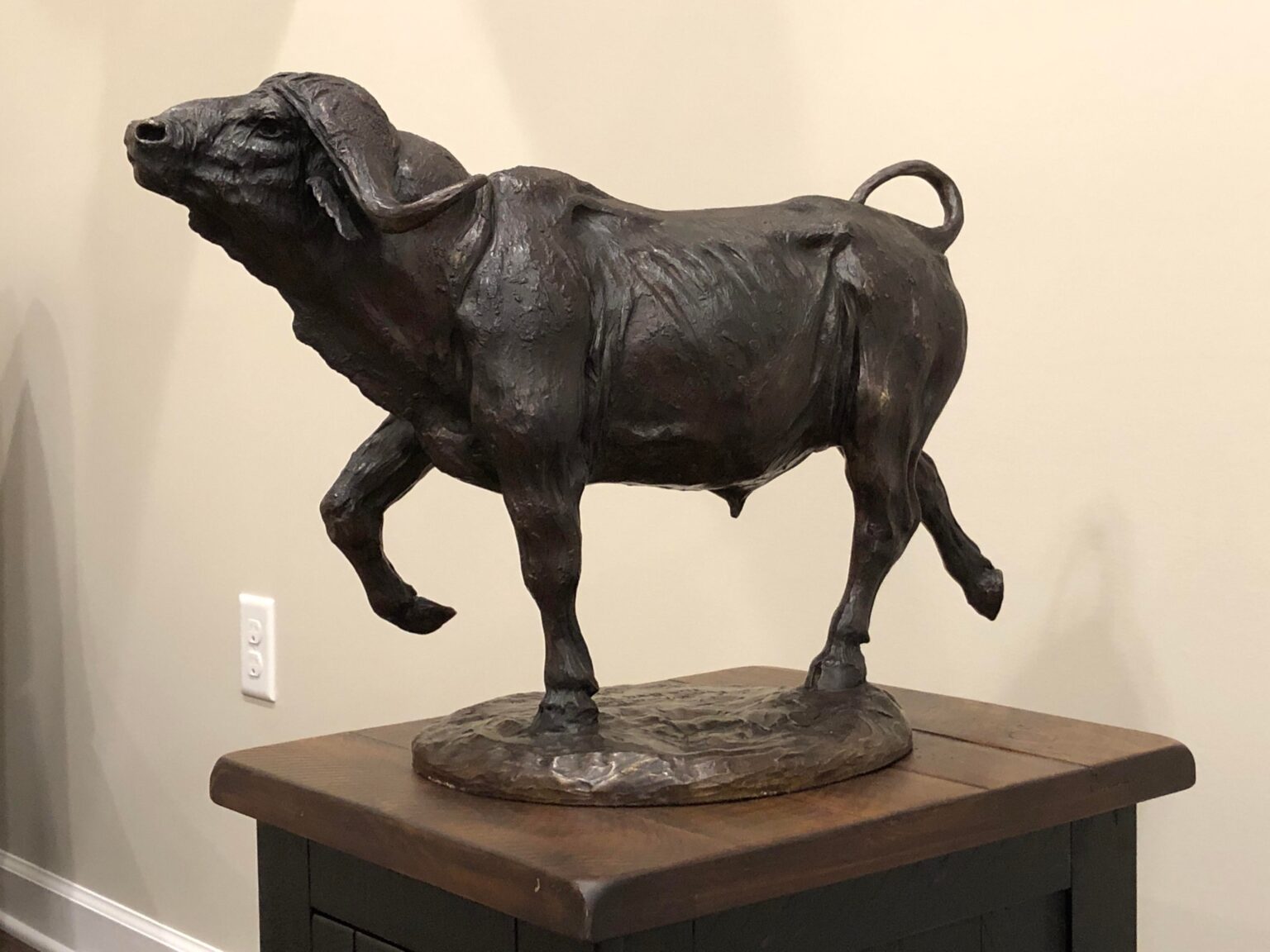
If you’re looking for a memorable hunting trip in Africa, the Luangwa Valley in Zambia is an exceptional destination. Whether you’re pursuing Cape Buffalo or simply seeking a thrilling adventure, email us, and we’ll be happy to help make your dream a reality.
Michael Maynor
I am a proud native of North Carolina with a deep love for the sporting lifestyle and everything Southern. My book collection seems to grow endlessly, and I have a particular fondness for collecting vintage duck decoys. Despite appearing content, my heart longs to return to Africa for another safari adventure. John 3:16


You May Also Like
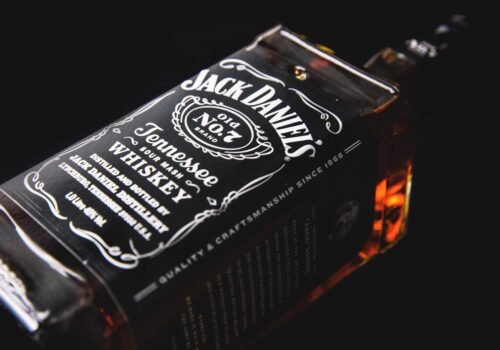
What’s the difference in Whiskey & Bourbon?
October 1, 2019
Holiday Guide 2023
November 14, 2023

